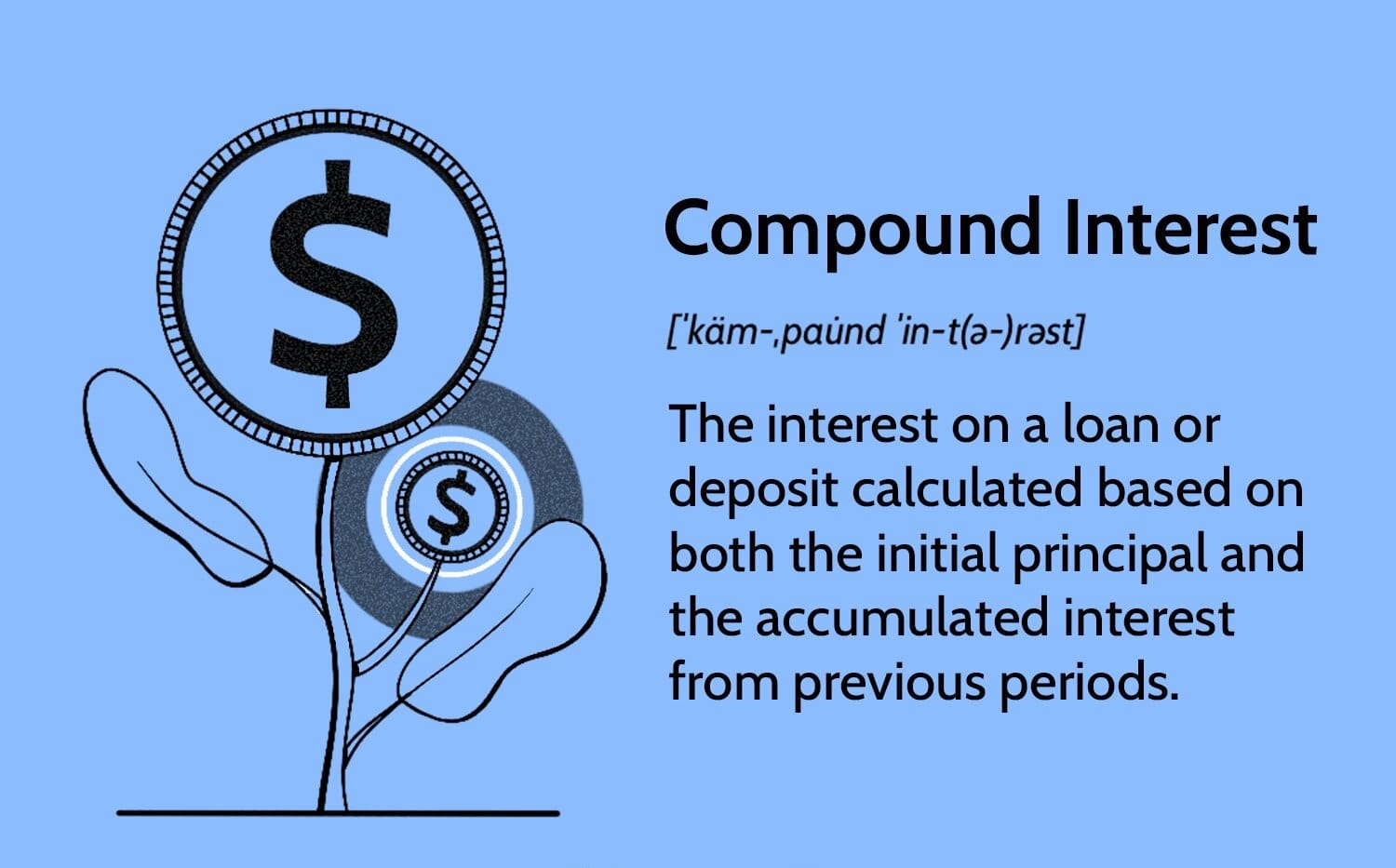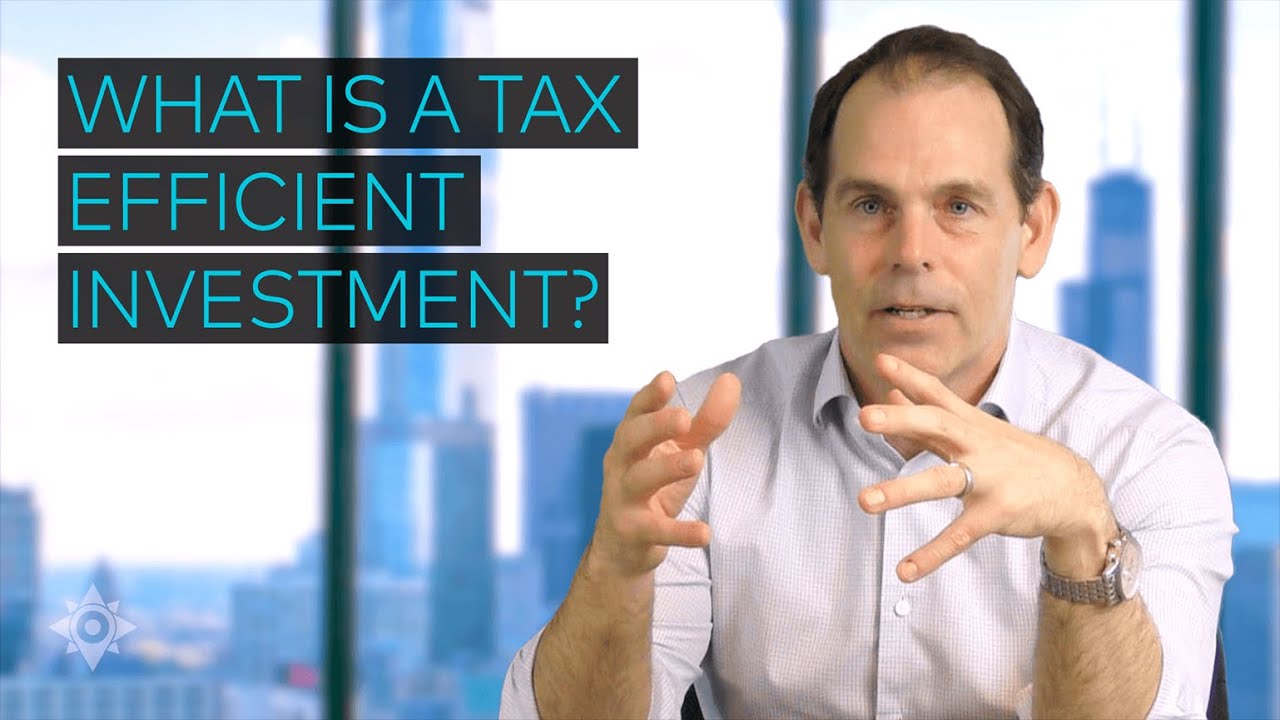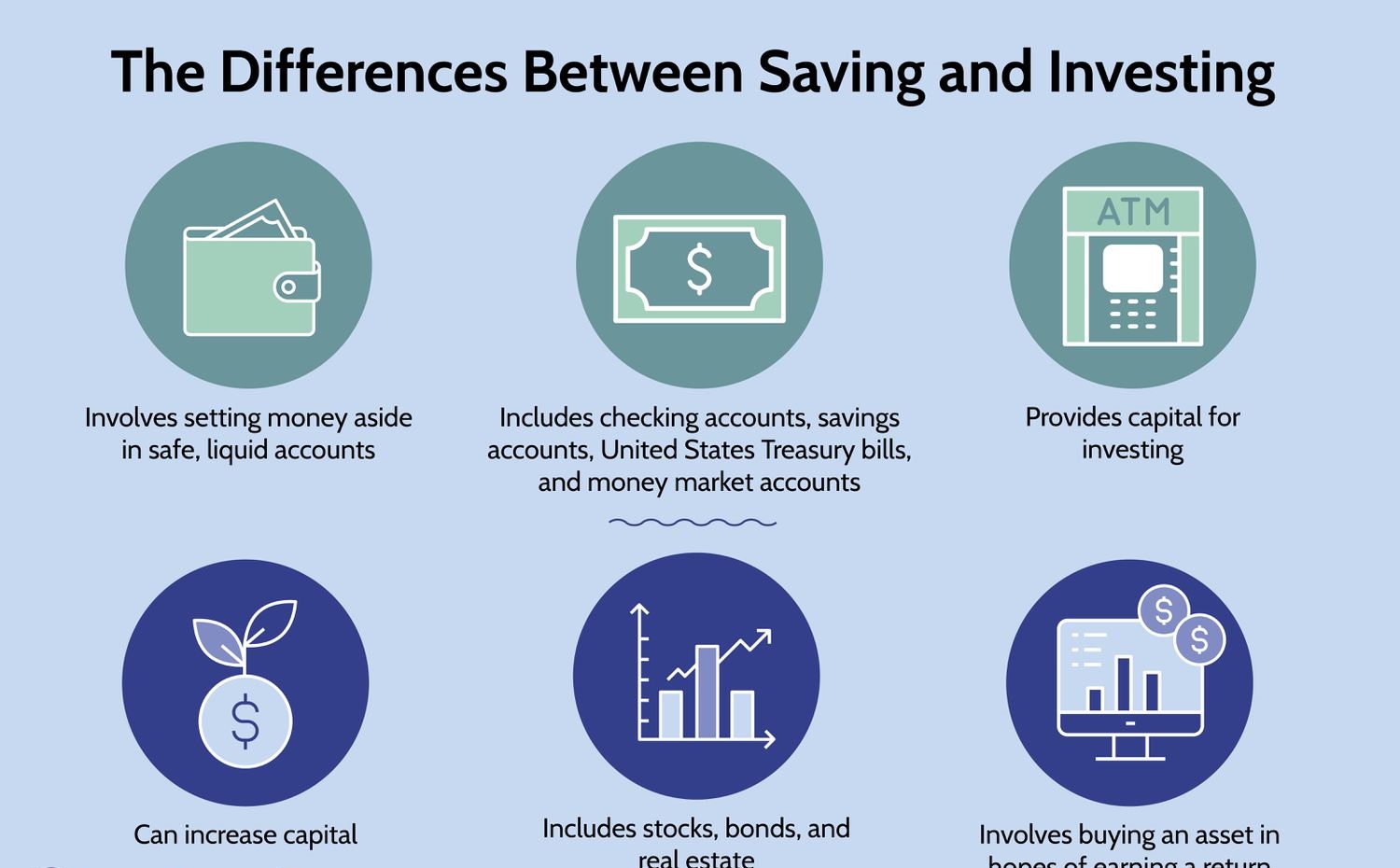Introduction
Investing is a crucial way to grow your wealth and secure your financial future. There are various investment options available, each with its own level of risk and potential returns. One investment strategy that has stood the test of time is compound interest. Compound interest allows your initial investment to grow exponentially over time, as the interest generated is reinvested to generate additional interest. This compounding effect can significantly boost your overall returns.
In this article, we will explore the different types of investments that offer compound interest. These investment options provide an opportunity for your money to grow steadily over time, allowing you to make the most of your hard-earned savings. Whether you are a seasoned investor or just starting out, understanding the various investment options that offer compound interest can help you make informed decisions and maximize your financial gains.
It’s important to note that investment decisions should always be based on your individual financial situation, risk tolerance, and investment goals. Before diving into any investment, it’s advisable to consult with a financial advisor who can analyze your personal circumstances and guide you in making the most suitable investment choices.
Without further ado, let’s delve into some of the popular investments that provide compound interest:
Investing in Stocks
Stock market investing is a popular choice for those seeking to benefit from compound interest. When you invest in stocks, you become a partial owner of the company and earn returns in the form of capital appreciation and dividends. Over time, the value of stocks can increase, leading to potential gains for investors.
Stocks offer the advantage of compounding through reinvesting dividends. If you choose to reinvest your dividends instead of cashing them out, you can purchase more shares of the stock. As you accumulate more shares, the potential for future dividend payments also increases, allowing you to benefit from compound growth.
One of the key factors to consider when investing in stocks is diversification. It’s essential to spread your investments across various companies and sectors to minimize risk. Investing in a mix of large-cap, mid-cap, and small-cap stocks can help balance your portfolio and increase the likelihood of overall growth.
Additionally, it’s important to conduct thorough research and analysis before investing in stocks. By studying the financial health, performance, and future prospects of a company, you can make informed investment decisions and potentially secure higher returns over the long term.
Keep in mind that investing in stocks involves risk. Prices can be volatile, and there is the possibility of losing money. It’s crucial to have a long-term perspective and not be swayed by short-term fluctuations. Successful stock investing requires patience and discipline, as well as a solid understanding of the companies you invest in.
Overall, investing in stocks provides an opportunity for compound interest growth through capital appreciation, dividends, and reinvestment. By carefully selecting a diversified portfolio of stocks and staying informed about market trends, you can potentially achieve significant returns over time.
Investing in Bonds
Bonds are another investment option that offers compound interest. When you invest in bonds, you are essentially lending money to the issuer, whether it be a government entity or a corporation. In return, you receive regular interest payments, known as coupon payments, and the principal amount back upon maturity.
Bonds provide a stable and predictable source of income, making them an attractive choice for conservative investors. The interest accrued on bonds can be reinvested, allowing for compound growth over time. This means that the interest earned on your bonds can generate additional interest, thereby increasing your overall returns.
One of the advantages of investing in bonds is their relatively lower risk compared to other investment options. Government bonds, in particular, are considered less risky as they are backed by the government’s ability to tax or print money. However, it’s important to note that investing in corporate bonds carries a higher level of risk, as the financial health of the issuing company can impact its ability to repay the debt.
Diversification is key when investing in bonds. By investing in a range of bonds with different maturities and issuers, you can spread your risk and enhance the potential for compound interest growth. It’s also crucial to consider the prevailing interest rate environment, as changes in interest rates can affect the value of bonds.
Before investing in bonds, it’s essential to evaluate the creditworthiness of the issuer. Credit rating agencies assign ratings to bonds based on their assessment of the issuer’s ability to repay the debt. Bonds with higher credit ratings generally offer lower yields but are considered safer investments.
In summary, investing in bonds allows you to earn compound interest through regular coupon payments and reinvestment. By diversifying your bond portfolio and conducting thorough research on the creditworthiness of issuers, you can potentially enjoy steady and reliable returns over time.
Investing in Mutual Funds
Mutual funds are investment vehicles that pool money from multiple investors to invest in a diversified portfolio of stocks, bonds, or other securities. They are managed by professional fund managers who make investment decisions on behalf of the investors. Mutual funds offer an accessible way for individual investors to benefit from compound interest.
When you invest in a mutual fund, you become a shareholder in the fund and your investment is spread across a range of securities. The fund’s returns are distributed to investors in the form of dividends or capital gains, which can be reinvested to generate compound growth.
One of the key advantages of investing in mutual funds is the ability to achieve instant diversification. By pooling your money with other investors, you gain exposure to a wide range of assets, reducing the impact of any single investment on your overall portfolio. This diversification helps to mitigate risk and enhance the potential for long-term growth.
Additionally, mutual funds offer investors the convenience of professional management. Fund managers closely monitor and adjust the fund’s holdings based on market conditions and investment objectives. This expertise can potentially lead to higher returns and better risk management.
There are different types of mutual funds available, such as equity funds, bond funds, index funds, and sector-specific funds. Each type caters to different investment goals and risk preferences. It’s important to research and select funds that align with your financial objectives and risk tolerance.
Investing in mutual funds does come with fees, including management fees and expense ratios. These fees are deducted from the fund’s assets and can impact overall returns. It’s important to carefully review the fees associated with each fund and consider their impact on your investment performance.
Overall, investing in mutual funds provides an opportunity for compound interest growth through a diversified portfolio managed by professionals. By carefully selecting funds and regularly reviewing your investment strategy, you can potentially achieve significant long-term growth and wealth accumulation.
Investing in Certificates of Deposit (CDs)
Certificates of Deposit (CDs) are a type of time deposit offered by banks and other financial institutions. When you invest in a CD, you agree to deposit a specific amount of money for a fixed period in exchange for a predetermined interest rate.
CDs offer a secure and low-risk investment option with guaranteed returns. The interest earned on a CD can be reinvested, allowing for compound interest growth. However, it’s important to note that the interest rates on CDs are typically lower than other investment options like stocks or mutual funds.
CDs have specific maturity periods, ranging from a few months to several years. Generally, the longer the maturity period, the higher the interest rate offered. It’s important to carefully consider your investment time horizon and liquidity needs before investing in CDs, as accessing your funds before the maturity date may incur penalties.
One advantage of investing in CDs is that they are federally insured by the Federal Deposit Insurance Corporation (FDIC) up to a certain limit. This insurance protects your principal investment and any accrued interest against the risk of bank failure, providing an added layer of security.
CDs can be a suitable investment choice for those looking for a stable and predictable source of income. They are particularly popular among risk-averse investors and those saving for short-term financial goals.
When considering investing in CDs, it’s essential to shop around and compare interest rates offered by different banks or financial institutions. Even a slight difference in interest rates can make a significant impact on your returns over time.
Investing in CDs should be part of a broader investment strategy that considers your overall financial goals and risk tolerance. While CDs provide a safe way to earn compound interest, they may not generate the same level of returns as higher-risk investments.
In summary, investing in Certificates of Deposit (CDs) allows for compound interest growth with guaranteed returns. CDs provide a secure and low-risk investment option, making them suitable for conservative investors or those with short-term financial goals.
Investing in Real Estate
Real estate investment is a popular choice for those seeking to build wealth and benefit from compound interest. Investing in real estate involves purchasing properties with the intention of generating income through rental yields or capital appreciation.
One of the key advantages of investing in real estate is the potential for compound growth. Rental income from properties can be reinvested to acquire additional properties or make improvements to existing ones. As the value of the properties increases over time, the potential for capital appreciation and higher rental income also grows, leading to compound interest gains.
Real estate investments can take various forms, including residential properties, commercial buildings, vacation rentals, and real estate investment trusts (REITs). Each type of investment offers unique advantages and considerations, such as cash flow potential, location, and market conditions.
Investing in real estate requires careful analysis of property values, rental market trends, and potential risks. Conducting thorough due diligence, including property inspections, financial analysis, and understanding local regulations, is crucial to make informed investment decisions and mitigate potential risks.
While real estate can provide excellent returns, it’s important to note that it also comes with associated risks and costs. Property values can fluctuate, and there are expenses such as maintenance, property taxes, and insurance to consider. It’s essential to factor in these costs to ensure the investment remains financially viable.
Real estate investing often requires a long-term commitment, as properties tend to appreciate over time. It is important to have a well-defined investment strategy and consider factors such as market cycles, rental demand, and potential exit strategies.
Another option for investing in real estate is through Real Estate Investment Trusts (REITs). REITs are companies that own, operate, or finance income-generating real estate. Investing in REITs provides an opportunity for individuals to gain exposure to a diversified real estate portfolio, benefit from rental income, and potentially earn dividends.
Overall, investing in real estate offers the potential for compound interest growth through rental income and capital appreciation. By carefully selecting properties, conducting thorough research, and understanding the local real estate market, investors can potentially achieve significant returns over the long term.
Investing in Exchange-Traded Funds (ETFs)
Exchange-Traded Funds (ETFs) have gained popularity among investors due to their flexibility, diversification, and potential for compound interest growth. ETFs are investment funds that trade on stock exchanges and aim to replicate the performance of a specific index or a basket of assets.
One of the key advantages of investing in ETFs is their ability to provide diversification across a wide range of asset classes, including stocks, bonds, commodities, or even specific sectors or countries. By investing in a single ETF, investors gain exposure to multiple securities, reducing the risk associated with individual investments.
ETFs can be bought and sold throughout the trading day, similar to individual stocks. This liquidity allows investors to adjust their positions or take advantage of market fluctuations. Additionally, ETFs generally have lower expense ratios compared to actively managed mutual funds, making them a cost-effective investment option.
When it comes to compound interest, ETFs provide the opportunity for growth over time. Dividends or interest earned from the underlying assets of the ETF can be reinvested, allowing for compounding. As the value of the assets within the ETF appreciates, the potential for capital gains also increases.
Investing in ETFs requires careful consideration of investment objectives and risk tolerance. There are a wide variety of ETFs available, each with its own investment strategy and risk profile. Some ETFs may focus on specific sectors, while others may provide broad market exposure.
It’s important to conduct thorough research and analysis before investing in an ETF. Consider factors such as the fund’s performance history, expense ratio, and the underlying assets or indices it tracks. Additionally, it can be beneficial to diversify across different ETFs to achieve a well-balanced portfolio.
While ETFs offer many advantages, including liquidity and diversification, it’s crucial to remember that all investments come with risks. The value of ETFs can fluctuate based on market conditions, and investors may experience losses. It’s important to have a long-term investment perspective and consider your overall portfolio allocation.
In summary, investing in ETFs provides an opportunity for compound interest growth through diversification and the potential appreciation of the underlying assets. By carefully selecting ETFs that align with your investment goals and conducting thorough research, you can potentially achieve significant returns over time.
Investing in 401(k) or Individual Retirement Accounts (IRAs)
401(k) and Individual Retirement Accounts (IRAs) are retirement savings accounts that offer individuals a tax-advantaged way to invest for the future. These accounts provide the opportunity for compound interest growth, allowing individuals to potentially build a substantial nest egg for their retirement years.
A 401(k) plan is typically offered by employers, while IRAs can be opened by individuals independently. Both accounts allow individuals to contribute a portion of their pre-tax income, which can grow tax-deferred until withdrawals are made during retirement.
One of the key advantages of investing in 401(k) or IRAs is the potential for employer matching contributions. Some employers offer a matching contribution, where they will match a percentage of the employee’s contributions to the 401(k) plan. This matching contribution effectively boosts the individual’s investment and accelerates the potential for compound interest growth.
Contributions made to 401(k) and IRAs can be invested in a variety of assets, such as stocks, bonds, mutual funds, or target-date funds. The earnings generated from these investments, such as dividends or capital gains, can be reinvested within the account, allowing for compound interest growth over time.
It’s important to note that there are contribution limits for both 401(k) plans and IRAs. These limits are set by the Internal Revenue Service (IRS) each year and may differ based on factors such as age and income. Maximizing contributions to these accounts can maximize the potential for compound interest growth and provide individuals with a more comfortable retirement.
Investing in 401(k) or IRAs provides individuals with long-term investment opportunities. The funds within these accounts are intended for retirement, so there may be penalties for early withdrawals. It’s important to have a long-term investment horizon and consider your risk tolerance and time frame until retirement when choosing investments within these accounts.
Another advantage of 401(k) and IRAs is the potential tax benefits they offer. Contributions to traditional 401(k) plans and IRAs are made with pre-tax income, reducing the individual’s taxable income in the present. Roth 401(k) plans and Roth IRAs, on the other hand, allow individuals to make after-tax contributions, with qualified withdrawals considered tax-free in retirement.
In summary, investing in 401(k) or Individual Retirement Accounts (IRAs) offers individuals an opportunity for compound interest growth and a tax-advantaged way to save for retirement. By maximizing contributions, taking advantage of employer matches, and making informed investment choices, individuals can potentially build a significant retirement fund to support their financial needs in the future.
Investing in Education Savings Accounts (ESAs)
Education Savings Accounts (ESAs) are specifically designed to help families save for their children’s educational expenses. These tax-advantaged accounts provide an opportunity for compound interest growth to fund qualified educational expenses such as tuition, books, and other related costs.
ESAs, also known as Coverdell Education Savings Accounts, allow individuals to contribute up to a certain limit annually. The contributions made to ESAs are not tax-deductible, but the earnings within the account grow tax-free. This tax-free growth provides an advantage for compound interest to accumulate over time.
One of the significant benefits of investing in ESAs is the flexibility in using the funds. Qualified educational expenses can include not only traditional college or university costs but also expenses related to primary and secondary education, including private school tuition or certain educational expenses for special needs students.
When investing in ESAs, it’s important to consider the investment horizon and time frame until the funds will be needed. As educational expenses are typically incurred over several years, it’s wise to choose investment options that align with your risk tolerance and provide a suitable balance between growth potential and preservation of capital.
ESAs offer a variety of investment options, including stocks, bonds, mutual funds, or certificates of deposit (CDs). It’s important to diversify the investments within an ESA to manage risk and potentially enhance the potential for compound interest growth.
It’s worth noting that there are certain income limits and contribution restrictions when investing in ESAs. Individuals and families must meet the income requirements to contribute to ESAs, and the total contributions allowed per beneficiary are subject to annual limits.
In addition to the potential compound interest growth, ESAs offer the flexibility to transfer funds to a different family member if the intended beneficiary does not use the funds for educational purposes. This feature allows families to allocate the savings to another child or relative’s education expenses.
In summary, investing in Education Savings Accounts (ESAs) provides individuals and families with a tax-advantaged way to save for educational expenses while potentially benefitting from compound interest growth. By carefully considering investment options, diversifying the investments, and staying within the contribution limits, individuals can build a sufficient education fund to support their loved ones’ educational pursuits.
Investing in Health Savings Accounts (HSAs)
Health Savings Accounts (HSAs) are investment accounts that allow individuals to save for qualified medical expenses while enjoying certain tax advantages. HSAs provide an opportunity for compound interest growth and can be a valuable tool for managing healthcare costs.
HSAs are available to individuals who have a high-deductible health insurance plan. Contributions made to HSAs are tax-deductible, and the earnings within the account grow tax-free. This tax-free growth provides the potential for compound interest to accumulate over time, helping to offset future medical expenses.
One of the key benefits of investing in HSAs is the triple tax advantage. Contributions to HSAs are tax-deductible, earnings within the account are tax-free, and withdrawals for qualified medical expenses are also tax-free. This combination of tax benefits makes HSAs a powerful investment and savings tool.
Contributions to HSAs can be invested in a range of options, including stocks, bonds, or mutual funds. By investing the funds within an HSA, individuals can potentially grow their savings with compound interest over the long term.
Unlike Flexible Spending Accounts (FSAs), HSAs allow individuals to carry over unused funds from year to year. This means that any contributions not used for medical expenses can continue to grow via compound interest, providing a valuable resource for future healthcare needs.
HSAs also have the advantage of portability. If you change jobs or insurance plans, your HSA account can be transferred or rolled over without losing the funds or incurring penalties. This flexibility allows for continued investment and compound interest growth even when circumstances change.
It’s important to note that HSAs have contribution limits each year, set by the IRS. Individuals can contribute up to a certain maximum amount, which is determined based on their health insurance plan type and coverage status.
When considering investing in HSAs, it’s crucial to have a long-term perspective and consider potential future healthcare needs. HSAs can be used to cover a wide range of medical expenses, including doctor visits, prescription medications, and eligible medical treatments.
In summary, investing in Health Savings Accounts (HSAs) allows individuals to save for qualified medical expenses while potentially benefiting from compound interest growth. By taking advantage of the tax benefits, carefully choosing investment options, and considering future healthcare needs, individuals can build a valuable resource to help manage their medical costs in the long term.
Conclusion
Investing in options that offer compound interest can be a powerful strategy for growing wealth and achieving long-term financial goals. Whether it’s through stocks, bonds, mutual funds, real estate, ETFs, retirement accounts, education savings accounts, or health savings accounts, each investment option presents its own unique benefits and considerations.
Compound interest allows your initial investment, along with any additional contributions or reinvested earnings, to generate even more returns over time. This compounding effect can significantly amplify your investment gains and help you build a substantial portfolio.
However, it’s important to remember that all investments come with risks. The value of investments can fluctuate, and there are potential losses associated with investing. It’s crucial to conduct thorough research, diversify your portfolio, and align your investment choices with your risk tolerance and financial goals.
Consulting with a financial advisor can provide valuable guidance in making informed investment decisions and ensuring that your investment strategy aligns with your individual circumstances.
By consistently investing, staying disciplined, and taking a long-term approach, you can harness the power of compound interest and potentially achieve significant financial growth. Start investing early, make regular contributions, and let the power of compounding work for you.
Remember, investing is a journey, and it’s important to regularly review and adjust your investment strategy as needed. Stay informed about market trends, economic conditions, and changes in your personal circumstances, and make informed decisions along the way.
Investing with compound interest in mind can help you build wealth, achieve financial independence, and secure a brighter future for yourself and your loved ones.

























